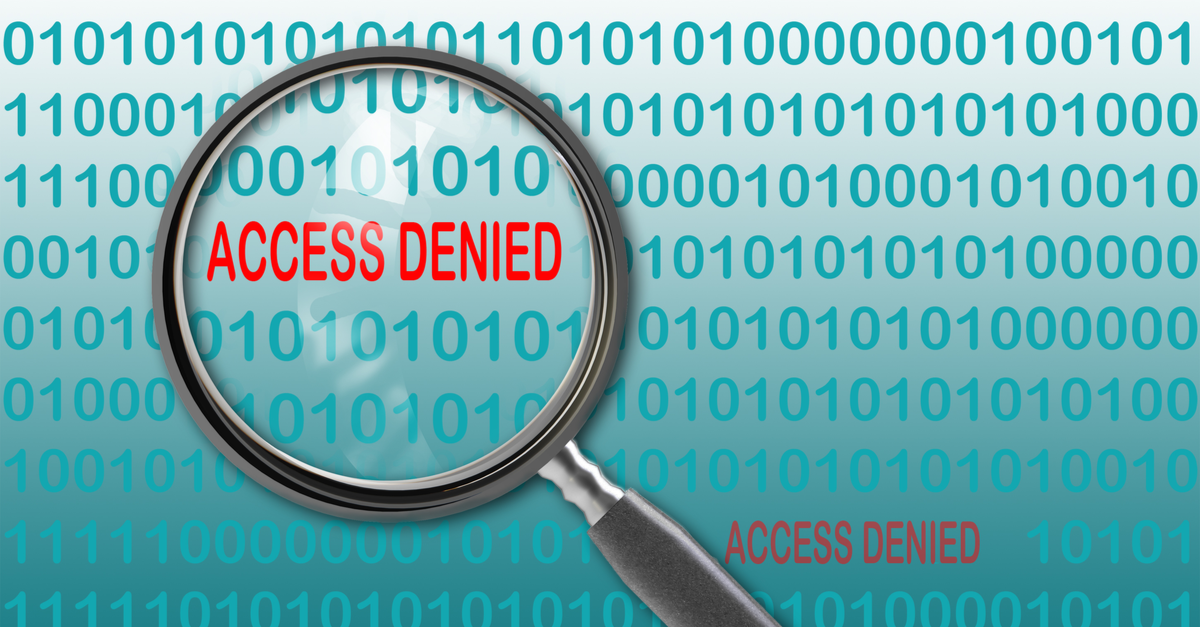8 Critical Success Factors For Achieving Audit-Readiness In PeopleSoft
Maintaining a state of audit readiness has become more critical than ever for organizations using PeopleSoft and other ERP systems in general. Today’s complex business environments, combined with the constantly increasing number of compliance regulations, require the audit to be dynamic, adaptable, and insightful to meet changing needs and expectations of investors, consumers, and regulators.
Unfortunately, what’s missing for most organizations is the lack of effective internal controls and policies that leads to compliance loopholes exposed during audits. So, before a deep dive into the success factors that prepare PeopleSoft teams for audits, let’s take a look at the basics.
What Is An Audit? What Makes PeopleSoft Teams Audit-Ready?
An audit is an official examination by a third party (independent auditor) to verify an organization’s adherence to reporting requirements (e.g., financial, operational, compliance, security, etc.). This verification is achieved by an auditor’s opinion on whether the entity’s reports are accurate and reliable. Typically, publicly traded companies, contractors to federal or state agencies, companies requiring bonds or insurance, private companies, and entities receiving government funding (e.g., universities, federal, state, and government agencies) undergo audits.
PeopleSoft teams should always log and monitor user activities to identify key risk indicators that could potentially lead to fraud. Establishing that your existing capabilities, internal controls, and policies are effective is the most significant step toward being audit-ready.
PeopleSoft Logging & Monitoring Are A Barrier To Audit-Readiness
When it comes to audits, PeopleSoft teams face certain challenges that make them unprepared for audits –
- User activity information crucial to mitigating user-centric threats is often missing
- Incident response for PeopleSoft is labor-intensive and time-consuming
- Incomplete audit trail of application-level user activity
- Auditing access and update activity require customization
Often, this brings to light some of the internal control deficiencies the organization being audited is grappling with, such as –
- Ineffective Access Controls
- Ineffective Data Field Level Controls
- Ineffective Transaction Controls
The results produced by your business units, internal auditors, and external auditors will officially conclude if your internal controls and policies are effectively mitigating risks.
8 Key Factors To Set You Up For A Successful PeopleSoft Audit
PeopleSoft teams always need internal controls to effectively mitigate significant IT risks relevant to financial reporting in and around business systems. Listed below are some of the key success factors that help organizations minimize financial risks in terms of systems, transactions, and data.
- Companies implementing ABAC can enable automation of policy enforcement into their access controls and prevent violation of policy requirements.
- A risk-based approach to identifying and classifying PeopleSoft data helps improve regulatory compliance and reduces costs by eliminating unnecessary control measures.
- An effective regulatory change management process helps PeopleSoft teams keep pace with new regulations and avoid ineffective policies and internal controls that lead to excessive compliance costs.
- Your company should be able to monitor authorization usage and user activity in PeopleSoft to detect SoD violations in real-time.
- An effective vulnerability detection and remediation program helps organizations understand security weaknesses, assess risk exposure, and implement policies and controls to reduce the possibilities of a breach.
- Deploying a Common Control Framework across all applications minimizes the need for ineffective and manual controls that result in increased audit, risk, and compliance costs in PeopleSoft.
- Implementing step-up MFA for sensitive PeopleSoft transactions adds preventative and detective controls at the transaction level. This helps security teams flag suspicious transaction activities by users and improve audit readiness.
- To comply with regulatory and audit requirements, organizations need to understand their residual risk levels (residual risk = inherent risk – control effectiveness). Continuously monitoring these risk levels ensures the operating effectiveness of their internal controls and helps mitigate overall risk.
Ace Your Audits With Appsian’s PeopleSoft Capabilities
An investment in additional PeopleSoft capabilities such as logging, monitoring, and policy enforcement, among others, is an opportunity to improve your audit readiness. With the Appsian Security Platform, you can implement, verify, and maintain effective controls to achieve your annual financial statement and compliance audit requirements in a more cost-effective manner with the following features –
- Adaptive Attribute-Based Access Controls to enable the enforcement of policy requirements into the access controls at the transaction and data level.
- Multi-Factor Authentication at the login, transaction, and data field levels to minimize risk exposure.
- Layered security, also known as defense-in-depth, protects against threats while incorporating compensating controls in the event of a control failure.
- Periodic Control Assessments to validate the effectiveness of existing controls.
- Continuous User Behavior Analysis to detect and report anomalies and threats.
Schedule a demo with our PeopleSoft experts to understand how you can implement effective controls and policies to stay audit-ready.
Put the Appsian Security Platform to the Test
Schedule Your Demonstration and see how the Appsian Security Platform can be tailored to your organization’s unique objectives
JD Edwards Security Audit: 7 Questions To Ask Before Choosing An Audit Solution
Auditing an ERP system like JD Edwards (JDE) for security risks is a complex, time-consuming, and tedious process. Security teams have to go through volumes of data on roles, authorizations, data access privileges, and usage logs to determine Segregation of Duties (SoD) conflicts, master data changes, and security gaps. It’s impractical and inefficient to do this exercise manually. And even if you have a large enough budget and team, there is a high possibility that you will miss something that might cause you to fail your external audits. One of the best ways to overcome this challenge is to implement an auditing solution that can simplify your audit and give you the information you need to improve your JDE security.
How Do You Know If You Need An Auditing Solution?
A good auditing solution enables you to save a significant amount of time and effort required to perform the audit. It should be easy to implement, not require much training to use, and provide you with actionable insights into your security blind spots. Here are some likely scenarios to help you decide if getting an auditing solution is the right decision for you:
- Achieving and maintaining SOX/FDA compliance is turning out to be too expensive
- Satisfying external auditors is becoming an uphill task
- Current audit issues are taking too long to resolve even as your next audit approaches
- The internal audit team is too small, or you simply don’t have one
- There is a consensus that security needs to be improved but no clear direction on priorities
- The company leadership won’t approve security budgets without evidence of security gaps
Questions To Ask Before Choosing An Auditing Solution For JD Edwards Applications
With so many solutions out there, it can be hard to choose one that is right for your needs. Every company has unique use cases that require consideration. The below questions can help you determine if the solution you are evaluating delivers on utility, ROI, and more.
1. Is It Technically Challenging?
The goal of getting an auditing solution is to simplify your auditing process to save time and costs. If the solution is technically complex to implement and use, it defeats the purpose completely. Before releasing that PO, check how long it takes to implement the solution and if your team needs intensive training to use it. If the answer is yes, you’re probably going to spend more time on implementation and training, which will only add to your audit woes.
2. Does The Solution Come With Pre-Seeded SoD Rules?
Once you implement the solution, populating it with rules to identify SoD conflicts is going to be a tedious task. Look for solutions that have a comprehensive set of rules that enable you to detect security and compliance violations out of the box. Some rules can be customized based on your specific needs, but a good audit solution should have all the basic SoD rules pre-seeded.
3. Can It Scan All User Access Routes To Your JDE Applications?
Today, applications are being accessed from the office, remote locations, and personal devices. The audit solution you choose should be able to scan for all access paths into your JDE environment. Comprehensive access data about who has access to what ensures that your security reporting and SoD analysis is much more accurate
4. Is There A Provision To Add SoD Rule Exceptions?
False positives have always been an audit challenge. There might be situations where users might be granted privileged access due to business or IT needs, even if such authorizations create an SoD violation. The ability to apply rule exceptions so that they won’t show up as violations in subsequent audits prevents time wasted on investigating false positives. However, make sure that you can pull separate reports to check the validity of mitigated access.
5. Are The Reports Business-Friendly?
It’s important to involve business managers in risk management, but nobody wants to read through complex, incomprehensible reports. The audit solution you choose should provide meaningful information about users’ access and drill down to spot where changes are needed. This ensures that the time taken to review is much less, reducing your JDE security audit’s overall cycle times.
6. Is The Dashboard User-Friendly
This might look like a trivial detail, but the dashboard is your interface to the solution. Having the information you need presented in a simple and well-organized manner allows you to use the solution efficiently. The dashboard should prioritize high-risk items and give a high-level view of your JDE security posture.
7. What’s The ROI?
This is one of the most important questions you should ask before zeroing in on any solution. Do a thorough analysis of how much time, effort, and cost will the audit solution save if implemented. Also, check if the reports provided by the solution are accurate and insightful enough to make a case with your CFO for security improvement budgets. A good audit solution should be cost-effective and save considerable audit efforts that translate into cost savings.
Appsian’s Cloud-Based Security Audit Service For JD Edwards
Unlike complex GRC platforms that offer a huge range of capabilities, but require enormous investment in cost and effort, Appsian’s Cloud-based Security audit service is a specialized tool that does a specific job well for a small price. Users can just log in, request an audit, and the results are delivered within hours. The solution can be installed in about 30 minutes, followed by a half-hour training session for users to find their way around. It’s as simple as that.
Download the Appsian QCloud Security Audit Datasheet to simplify your JD Edwards audit journey.
Put the Appsian Security Platform to the Test
Schedule Your Demonstration and see how the Appsian Security Platform can be tailored to your organization’s unique objectives
Internal SOX Controls: A Quick Overview
What is Internal SOX Controls?
The Sarbanes-Oxley (SOX) Act of 2002 was established as federal law to ensure accurate financial reporting by public companies and protect the intended users, such as lenders, investors, and government organizations, from financial statement errors and fraud and malpractice.
The Act includes 11 sections, out of which sections 302 and 404 are the most relevant to internal SOX controls. SOX section 302 defines the corporate responsibility for certifying the financial reports. Section 404, known as Management Assessment of Internal Controls, specifies requirements for maintaining and monitoring internal controls related to the company’s financial reports.
What is An External SOX Audit?
Section 404 requires businesses to have an annual audit of internal SOX controls performed by an independent external auditor. The purpose of the external audit is to enhance the degree of confidence of the intended users in the accuracy and completeness of the company’s financial reports, including balance sheets, income statements, cash flow statements, and statements of shareholders’ equity.
4 Key SOX Compliance Requirements
Any company that needs to comply with SOX must meet the following requirements annually. While each organization may establish its own compliance best practices, the ultimate goal is to meet four key requirements.
Management Responsibility:
SOX requires a company’s CEO and CFO to personally certify that all records are complete and accurate. Specifically, they must confirm that they accept personal responsibility for all internal controls and have reviewed these controls in the past 90 days. Failure to do so can result in heavy fines of millions of dollars and imprisonment.
Internal Controls:
The SOX act stipulates that public companies need to file a report that demonstrates the existence and efficacy of internal controls pertaining to financial records. Once again, SOX puts the burden of implementing these controls on the CEO and CFO to ensure the integrity and accuracy of financial information.
Data Security Policies:
Organizations that fall under the SOX act must create and implement data security policies that are designed to protect the storage and use of financial information. These policies should be communicated across the organization and enforced consistently to prevent financial inaccuracy or misinformation.
Proof of Compliance:
Companies are required to maintain and provide documentation that proves that all compliance requirements are being met. Also, all controls pertaining to SOX must be continuously monitored, tested, and recertified to measure SOX compliance objectives.
Impact of Internal SOX Controls on ERP Systems
Layered Internal Controls
The consistent implementation of internal controls mandated by SOX means that organizations must ensure adequate controls within all applications, including ERP systems. However, the role-based access controls provided by most ERP vendors are not fine-grained enough to demonstrate internal SOX controls.
To implement and demonstrate controls, organizations need to be able to implement layered access controls, often called defense-in-depth, that go beyond the initial point of access. Security teams must be able to monitor who is accessing what, when, and from where. This requires controls to be implemented at the access, transaction, and data field levels.
Even if you succeed in implementing these controls, SOX demands that these controls be continuously tested and monitored, making control recertification an integral part of your ERP SOX compliance process. And finally, your internal audit teams must be able to pull reports and logs that can undeniably verify the existence and efficiency of these controls.
Segregation of Duties Management
Segregation of Duties (SoD) is another aspect of SOX that affects ERP applications. Detecting and preventing SoD violations is vital to managing risk and fraud. When ERP admins need to manage thousands of roles and authorizations requests, there is a real risk of user over-provisioning and role conflicts that could lead to financial fraud. However, manually tracking each role and the resulting conflicts between roles is practically impossible.
To counter this challenge, automated SoD management solutions can be implemented across your applications. Automated cross-application SoD capabilities help you monitor role conflicts and SoD violations in real-time. They also manage your overall application risk from a single platform.
How Appsian Enables Internal SOX Controls in ERP
The Appsian Security Platform provides organizations with a range of controls and monitoring solutions that enable your security and compliance teams to not only implement internal SOX controls but also demonstrate their effectiveness at multiple levels.
Attribute-Based Access Controls
With Appsian’s ABAC capabilities, organizations can enhance their existing role-based access controls by taking contextual risk into account. For example, when users log into ERP applications, ABAC allows you to implement granular policies based on attributes like time, device, IP address, locations, etc. This information enables you to allow or deny access to sensitive information based on the context of access and significantly reduce data exposure in high-risk scenarios.
Adaptive Internal Controls
SOX requires companies to implement controls on access to and modification of data that affects financial reporting. Appsian enables internal controls at the ERP data field and transaction levels with tools like data masking and step-up multi-factor authentication for sensitive transactions. Coupled with Appsian’s ABAC capabilities, these layered controls can be activated based on contextual risk while allowing users full access when the risk is acceptable.
Automated SoD Management
Manually managing thousands of roles and authorizations while ensuring there are no SoD conflicts is a challenge for most organizations. Appsian automates SoD management by monitoring user activity and role usage in real-time. It pinpoints any current SoD violations of users and roles and prevents potential conflicts by testing roles in advance. Appsian’s cross-application capability also allows you to manage ERP risk with a single platform and implement SOX compliance consistently in all your ERP systems.
Learn how Appsian enables SOX compliance across your ERP applications with cross-application risk management, continuous controls monitoring, and adaptive internal controls. Schedule a demo with our ERP compliance experts.
Put the Appsian Security Platform to the Test
Schedule Your Demonstration and see how the Appsian Security Platform can be tailored to your organization’s unique objectives













